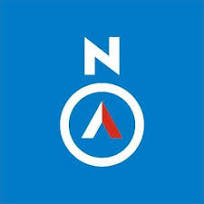Browse transcripts » National Archives / Archives South Holland
Summary (also from the next page)
At the Nagasacki trading post on September 25, 1667, they tried to bring in the fluyt ship "White Lion" using tow boats. Since the ship was about 5 Japanese miles from shore, they had to pay double wages of 24 per boat. Due to heavy rain and wind, the boats couldn't reach the ship. By evening, the ship anchored near Fishers Island and signaled for help. The interpreters Issierobe and Jochem were reluctant to ask the governor for permission to assist.
On September 26, they hired 40 boats which successfully brought in the ship. Constantin Ranst and his sick wife were brought ashore and welcomed. On September 27-28, they unloaded the White Lion's cargo, which matched the inventory.
The first sales day was held on September 30. On October 1, after difficult negotiations, they agreed on a price of 12 tael 5 maas per picol. Most goods sold well. Ranst's wife gave birth to a stillborn son who was buried in the Dutch cemetery by one of the interpreters.
From October 2-4, they were busy delivering the sold goods, which went slowly due to new rules from the Nagasacki governor about hiring laborers. On October 6, during the second showing day, several thieves were caught and beaten with sticks. The second sale was held on October 7, selling various Dutch goods.
Transcription
Int Comptoir nangasackj.
dorsten
Sondagh 25„e d=o wast met betoge lugt stil en aangenaam weeder smorgens lieten wij
de tolcken issierobe en Jochem roepen hen voorhoudende om met
bougseer bercken 't fluijt schip de witte leeu binnen te haalen maar ge¬
„merckt genoemde fluijt noch wel vijff Japanse mijlen 't Zeewaart vande
nos was, seijden sij dat men voor ijder berckjen dubbelt loon dat 24 maar
souden moeten betaalen, ende naar dien wij genoemde sluijt met dat Coste
„lijcke Cargasoen gaarne binnen hadde hebben wij sulckx volkomen
toegestaan, wes dat op stont omtrent de bo bercken daar op uijt gesonden sijn
dese bercken omtrent de hoeck vant vissers eijlant komende saagen 't schij
buijten de nos omtrent als voorsegt 5: Japanse mijlen settent der halven
met den andren 't zewaart in doch omtrent 2 mijlen buijten de wal
wesende begont seer stijff te regenen en waaijen waar door sijt schip
door de diesigh=t van den neervallenden reegen niet meer konden sien,
en om die oorsaack gedworigen weder naar de wal te keeren des naar
middags 't weer een weijnig op klaarende sagen sijt schip weeder omtrent
2 mijlen van de wal waar op sij andermaal devoir deden om daar aan
te koomen maar omtrent een halff mijl vant schip wesende stonter
weer een felle travaet van regen en wint op weshalven d=o schip van de
wal aff wendende om noch een gang te gaan raacktent weer door disigh=t
des weers uijt haar gesigt, waar over de berckiers de moet verlooren geven
van daar te sullen aanraacken sijn met onverregter saacke weder gere„
„tourneert omtrent den avont quam dickgenoemde sluijt ondert vissers
eijlant ten ancker, en dede met schieten diversche seijnen op dat wij 't
selve met bercken soude binnen haalen, wij deeden dan andermaal ons
uijterste devoir om de bercken daar naa toe te Crijgen, maar de tolcken
off woudent den gouverneur niet vraagen, wes hier in voor morgen
ogtent niet sal kunnen gevoordert werden 't schijnt als haar de tolcke
hier in Japan onwillig toonen dat wij niet een stroo ( bij maniere
van spreecken) verleggen kunnen, soonder dickwils tonnen gouts
aan hangen; 't welck een verdrietige saack is, doch wat sal men doen
nos
patientie is hier de meeste oeffeningh van 's Comp=s dienaars —
Maandagh 26:e D=o de wint noordelijck met een gestadigen reegen niet te min hebben
wij weder 40 bercken gehuurt omme 't fleuijt de witte leeu binnen te
haalen en hier op de reede te brengen welcke gevolgelijk gepresen sij
de heer, d=o fluijt des naermiddags omtrent een uier hier voort eijlant
gebragt hebben voorts wierde met een berck naer becomene licentie
vanden
nus


Source citation
National Archives / Archives South Holland, archive number 1.04.02, Inventaris van het archief van de Verenigde Oost-Indische Compagnie (VOC), 1602-1795 (1811), inventory number 1267, Heren Zeventien en kamer Amsterdam, INGEKOMEN STUKKEN UIT INDIË, Overgekomen brieven en papieren, Overgekomen brieven en papieren uit Indië aan de Heren XVII en de kamer Amsterdam, Overgekomen brieven en papieren uit Indië aan de Heren XVII en de kamer Amsterdam, 1669 GGGG. Derde boek: Batavia's ingekomen brievenboek, deel I
Artificial Intelligence (AI)
The summary is created by the computer based on a language model.
Both artificial intelligence tasks are not perfect, but often more than sufficient so that the historical document becomes understandable.

